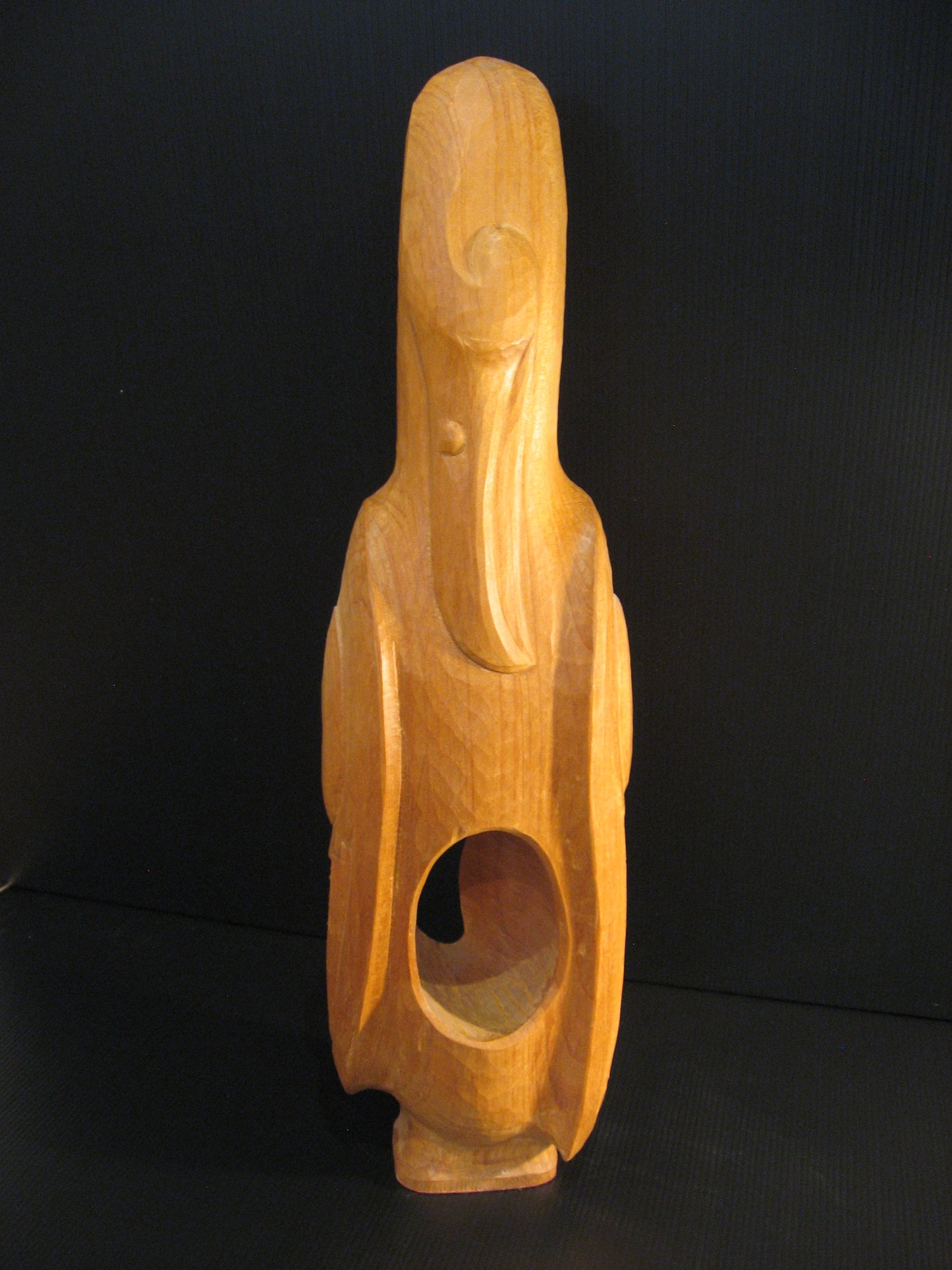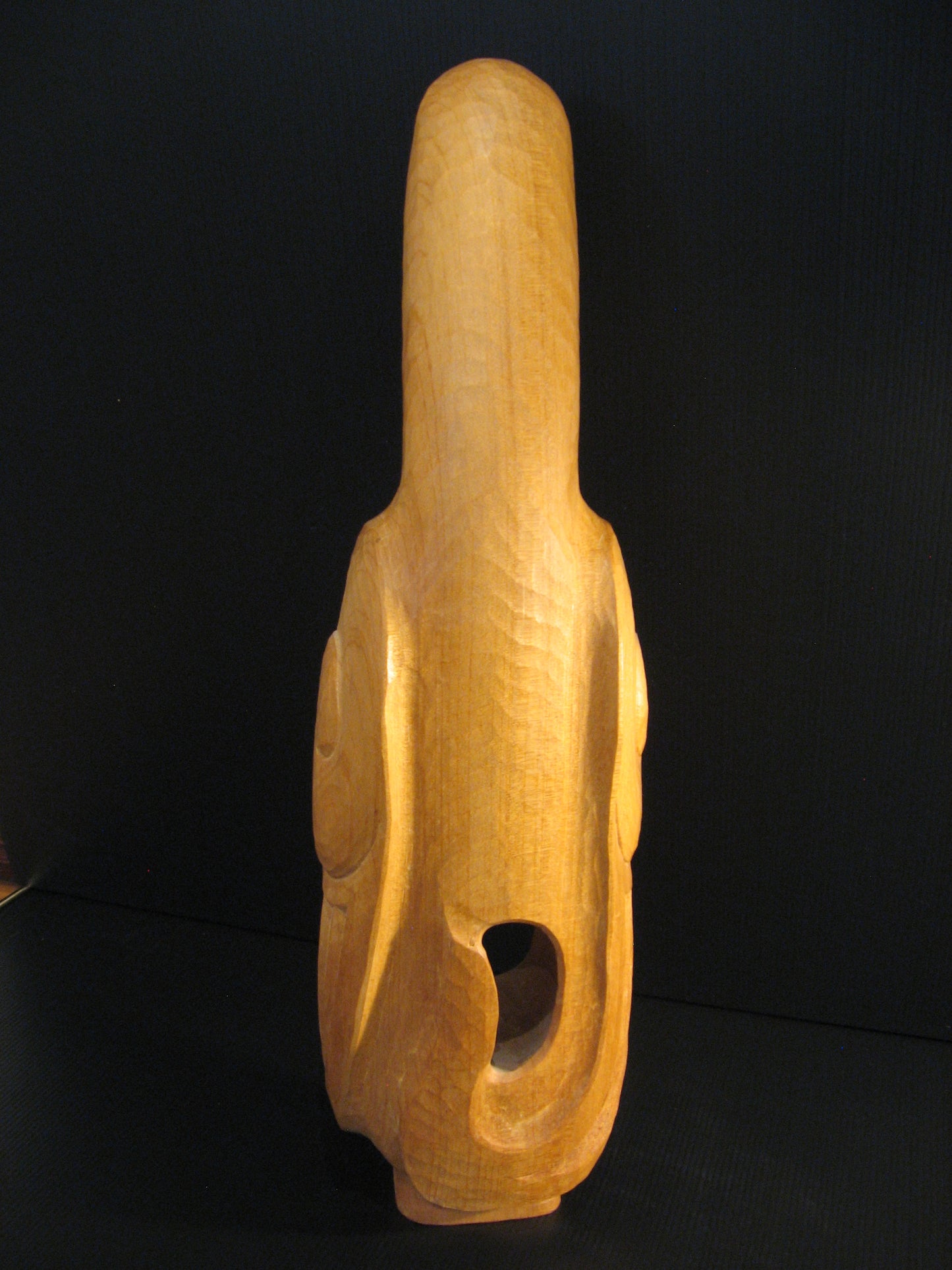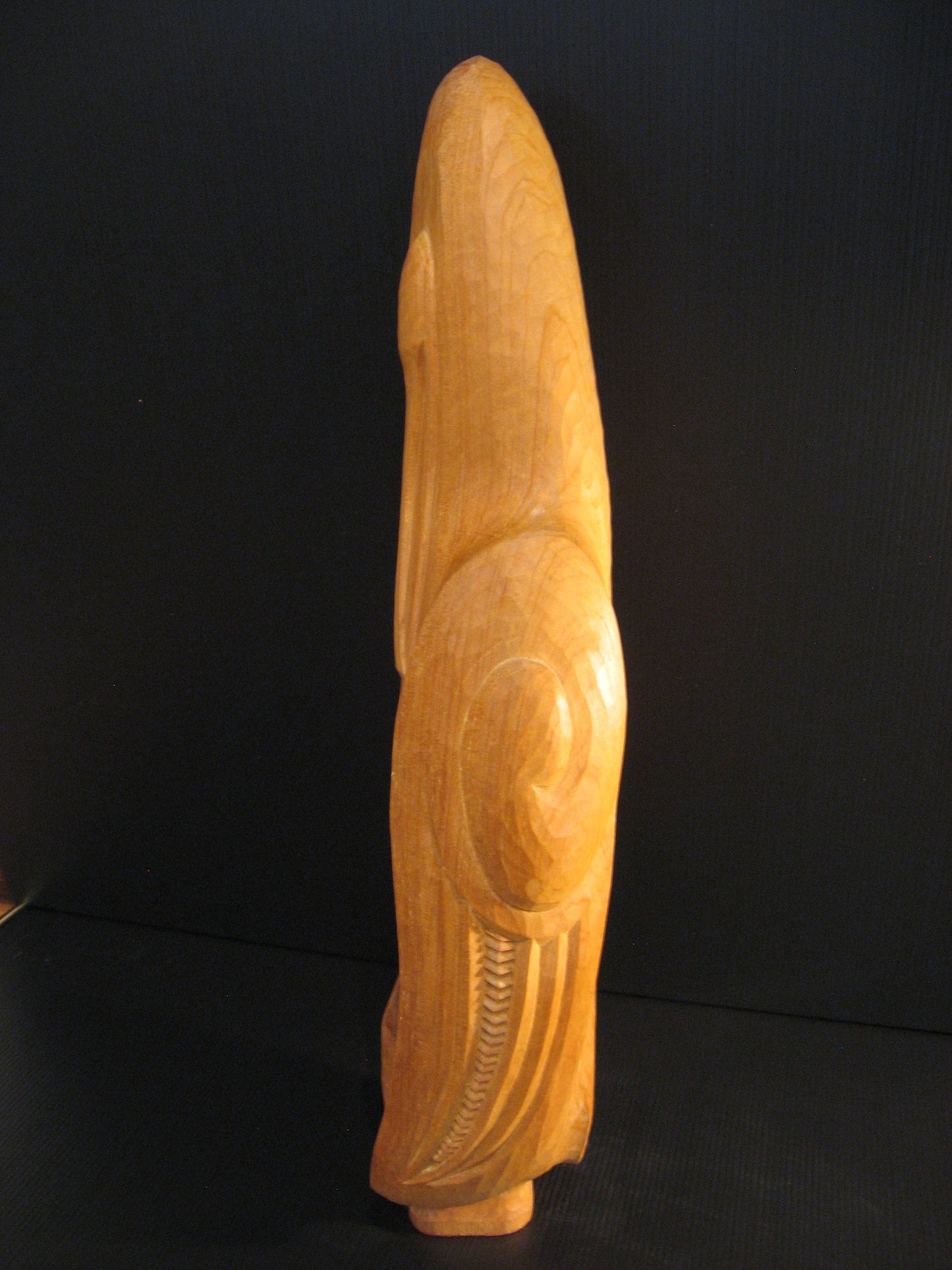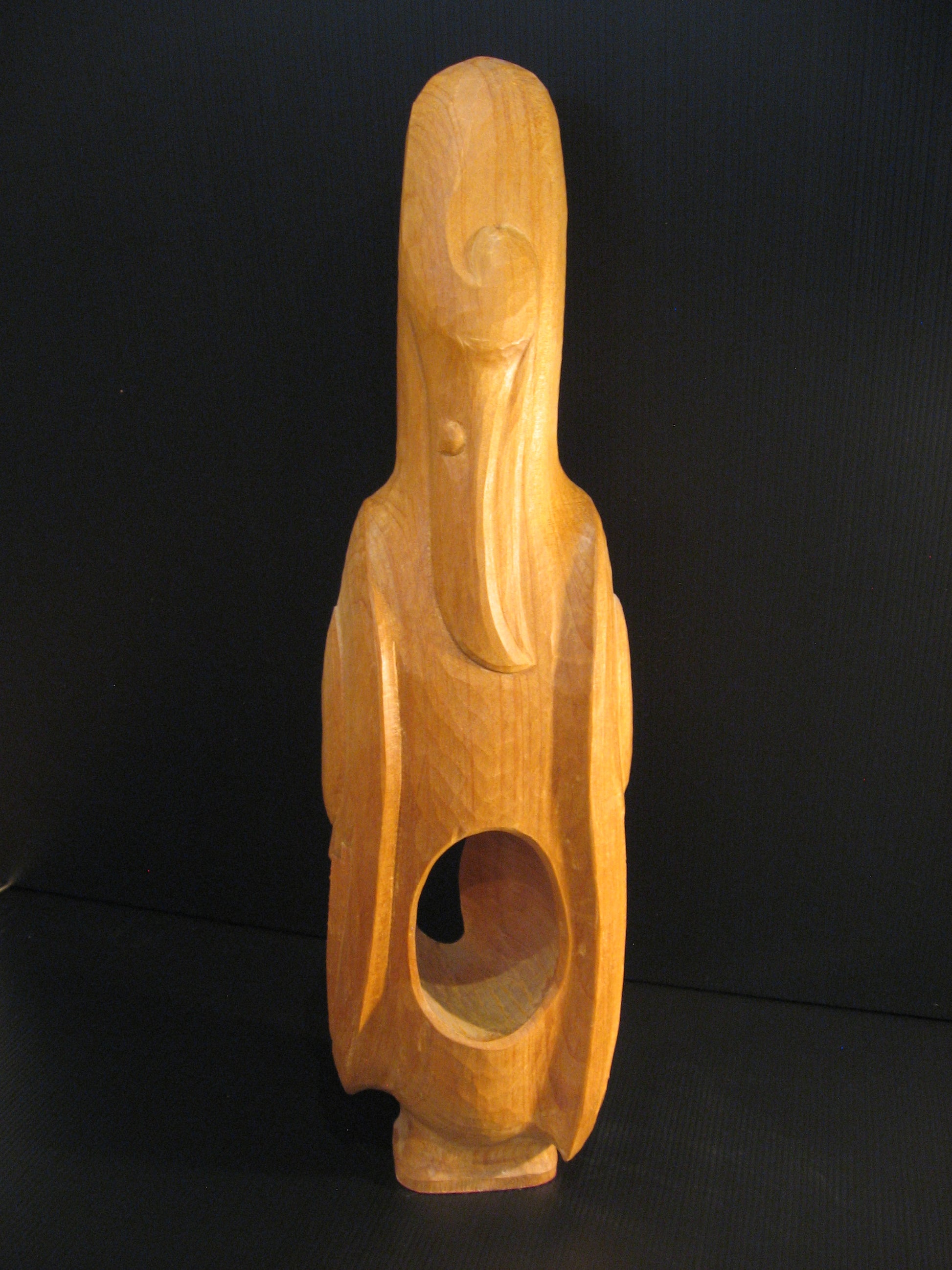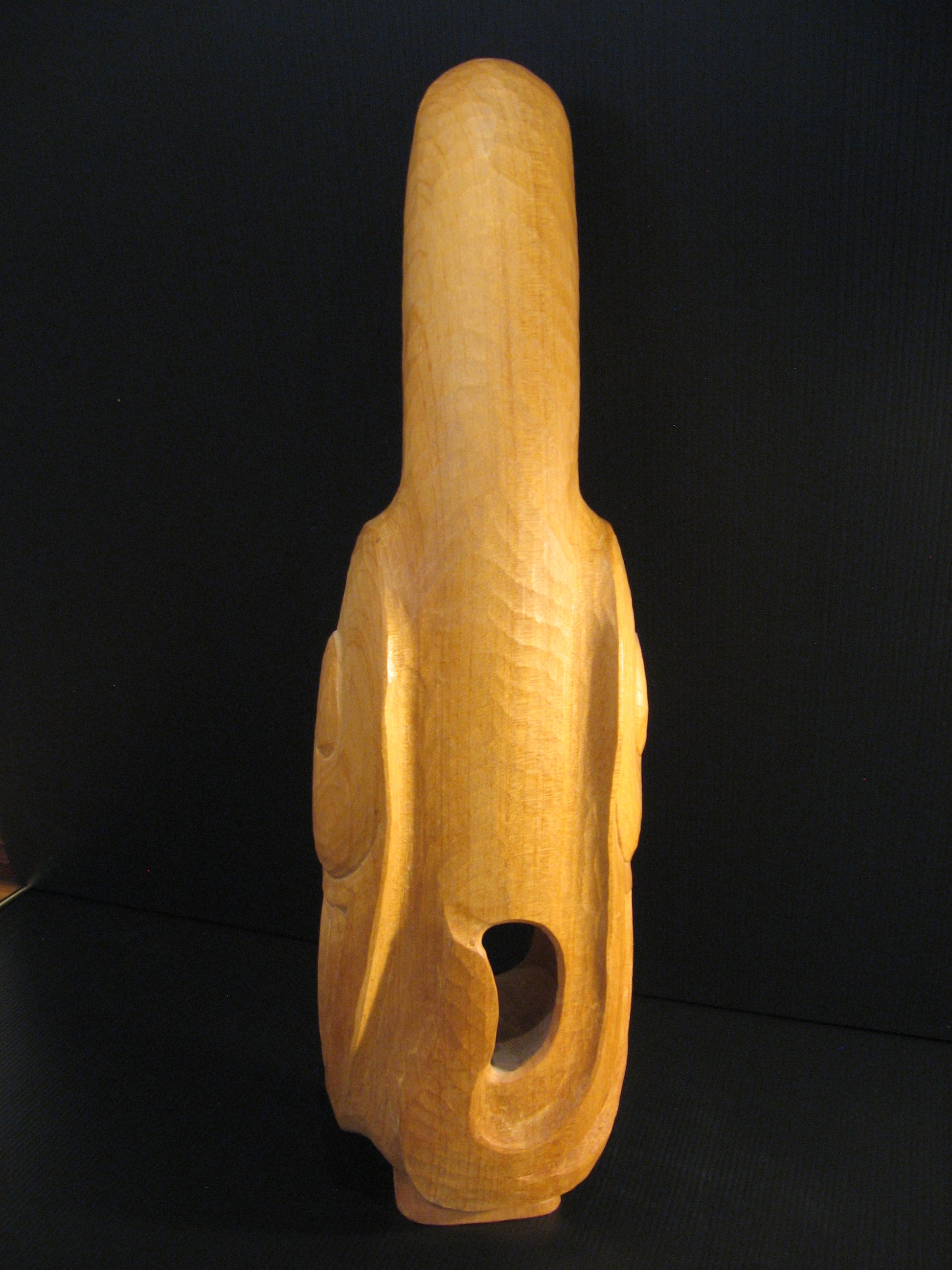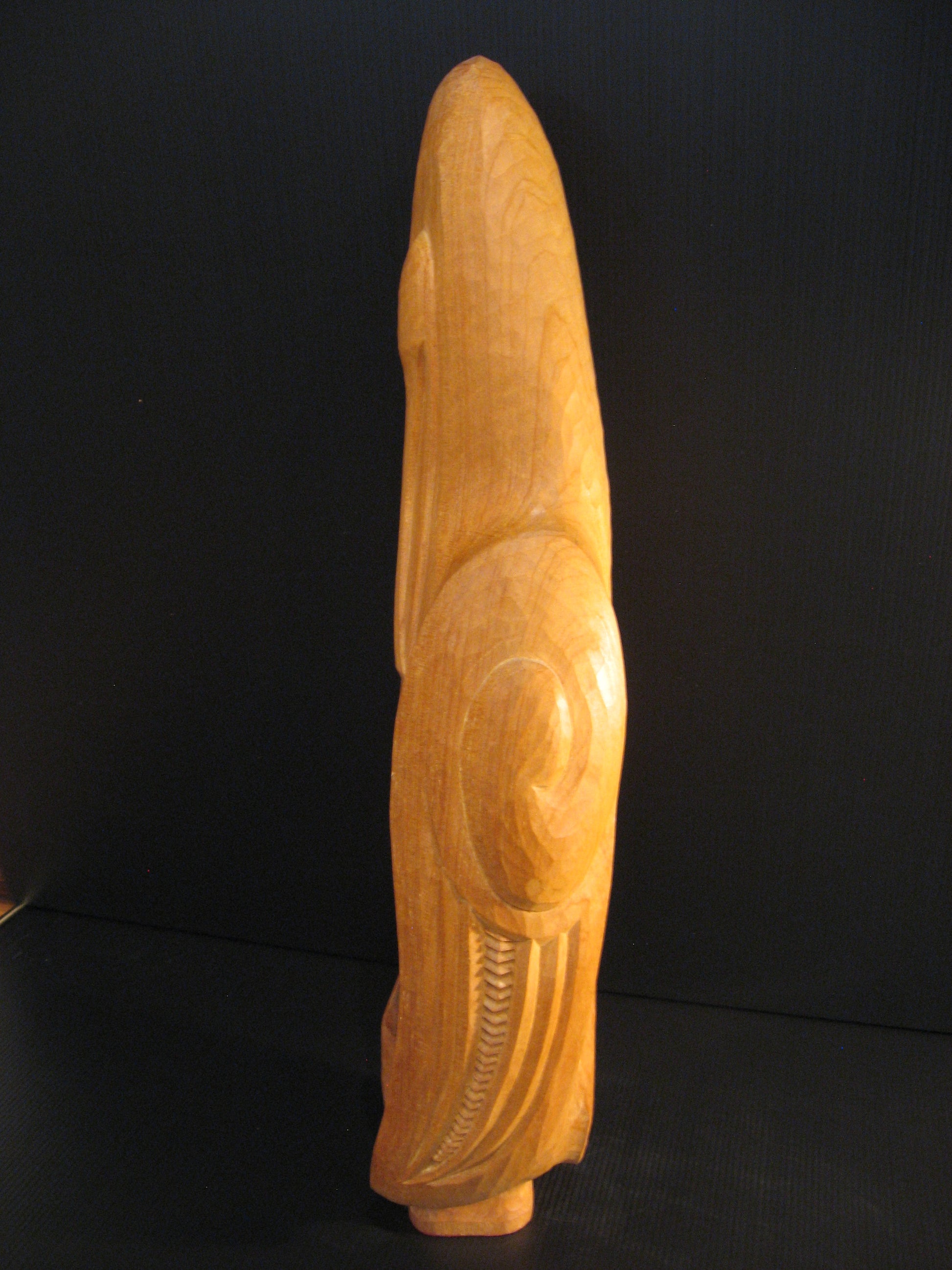silverferngallery
Hand Carved Kauri Toroa (Albatross) - 46.5cm - by Michael Matchitt
Couldn't load pickup availability
Kauri wood, finished in wax and oil
13cm x 46.5cm x 8cm
Culture:
This one of a kind piece of art has been hand carved in the indigenous tradition of the Māori from Aotearoa (New Zealand). Whakairo (carving) is a language which transforms Māori cultural ideals into a physical form. For centuries it has been used to record whakapapa (genealogy), traditions, and pūrākau (histories).
Series:
This piece is part of the Manu series. Manu (birds) are significant kaitiaki (guardians). In this series the carved space is representative of a womb - a protective repository for taonga (precious objects).
Style:
This style is a contemporary interpretation of a rich traditional cultural icon. The form and shape, while modern, are achieved through the use of traditional tools and practices. The artist uses chisel and mallet, not sandpaper, to create the smooth surface and clean lines.
Surface patterning:
Pākati and haehae are contemporary surface patterns more commonly found in Post-European carvings than their Pre-European predecessors. They can be used to decorate and to represent lines of whakapapa.
About the Toroa:
The northern royal albatross is a huge white albatross with black upperwings. It usually mates for life and breeds only in New Zealand. Biennial breeding takes place primarily on The Sisters and The Forty-Fours Islands in the Chatham Islands. There is also a tiny colony at Taiaroa Head near Dunedin on the mainland of New Zealand.
Northern royal albatross can be sighted throughout the Southern Ocean at any time of the year. Non-breeding and immature birds, including newly fledged birds, undertake a downwind circumnavigation in the Southern Ocean. The main wintering grounds are off the coasts of southern South America. They are generally solitary foragers and forage predominantly over continental shelves to shelf edges.
About NZ Kauri
